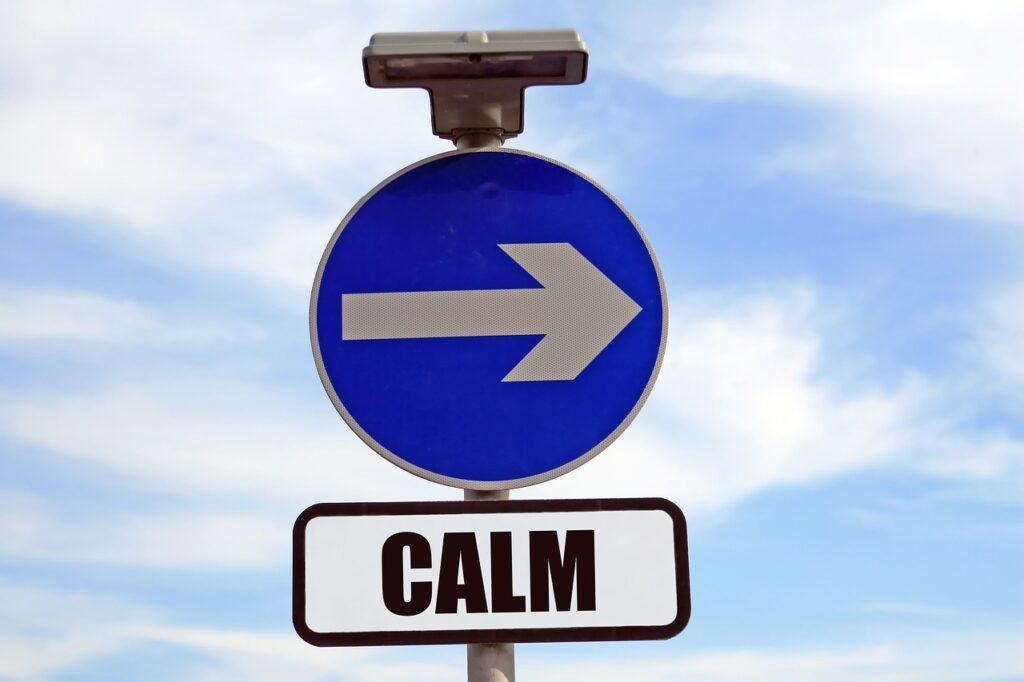Imagine a peaceful oasis where you can escape from the chaos of everyday life and discover a renewed sense of calm and clarity. Guided meditation is like having a knowledgeable and compassionate guide who gently leads you on a journey of inner exploration and relaxation. By simply following their soothing voice and allowing your mind to wander, you can unlock hidden reserves of peace, clarity, and self-awareness. In this article, we will explore the fascinating world of guided meditation and how it works its magic on your mind and body. Get ready to embark on an enlightening journey!

This image is property of pixabay.com.
What is Guided Meditation?
Definition of guided meditation
Guided meditation is a practice where an individual is led through a meditation session by a guide or instructor. It involves following verbal guidance, either in-person or through recorded audio, to help focus the mind and achieve a state of relaxation and inner peace. Unlike silent meditation, guided meditation provides a structured approach that helps beginners and experienced practitioners alike.
Purpose of guided meditation
The purpose of guided meditation is to enhance self-awareness, reduce stress, and promote mental and emotional well-being. It allows individuals to explore their inner thoughts and feelings in a guided and non-judgmental manner. Guided meditation encourages the cultivation of mindfulness and helps establish a deeper connection with oneself and the present moment.
Benefits of guided meditation
Guided meditation offers numerous benefits for both the mind and body. It can help reduce anxiety and stress, improve sleep quality, enhance focus and concentration, increase self-compassion, promote emotional healing, and boost overall mental and physical well-being. Regular practice of guided meditation can lead to a greater sense of calm, clarity, and resilience in daily life.
How Does Guided Meditation Work?
Guided meditation techniques
Guided meditation techniques can vary depending on the style or theme of the session. Some common techniques include deep breathing exercises, body scan meditation, visualization, loving-kindness meditation, and chakra meditation. These techniques are designed to cultivate relaxation, mindfulness, and a heightened sense of self-awareness.
Finding a guided meditation session
Guided meditation sessions can be found in various formats, such as in-person classes, meditation apps, online platforms, or audio recordings. It is recommended to choose a reputable source or instructor that aligns with your personal preferences and goals. Online platforms or apps often offer a wide variety of guided meditation sessions to cater to different needs and interests.
The role of the guide in guided meditation
The guide in guided meditation plays a crucial role in providing instructions, encouragement, and support throughout the session. They create a safe and nurturing environment for individuals to explore their inner selves and guide them through various meditation techniques. The guide’s voice and words are designed to induce relaxation, promote focus, and assist in maintaining a steady meditation practice.
Preparation for guided meditation
Before beginning a guided meditation session, it is important to create a conducive environment. Find a quiet and comfortable space where you can relax without distractions. Consider using props such as cushions or blankets to support your posture. Switch off or silence any electronic devices that may interrupt your practice. It is also helpful to set a specific intention or goal for your meditation session.
Steps to follow during guided meditation
Once you are prepared, follow these steps to engage in a guided meditation practice:
- Find a comfortable seated or lying position.
- Close your eyes or soften your gaze.
- Take a few deep breaths to relax your body and mind.
- Listen to the guide’s instructions and focus on their voice.
- Follow any visualizations or techniques instructed by the guide.
- Allow yourself to be fully present and non-judgmental of your thoughts and experiences.
- If your mind wanders, gently bring your attention back to the guidance.
- Gradually bring your awareness back to your surroundings as the session comes to a close.
- Take a moment to reflect on your experience before resuming your daily activities.
Types of Guided Meditation
Body scan meditation
Body scan meditation involves directing your attention to different parts of the body, systematically scanning for sensations and signs of tension or relaxation. It helps cultivate body awareness, release physical tension, and promote relaxation.
Loving-kindness meditation
Loving-kindness meditation focuses on developing feelings of love, compassion, and goodwill towards ourselves and others. It involves directing positive affirmations and well-wishes towards ourselves, loved ones, acquaintances, and even challenging individuals or situations.
Visualization meditation
Visualization meditation uses the power of the imagination to create vivid mental images. It involves visualizing peaceful landscapes, healing light, or desired outcomes to promote relaxation, mental clarity, and manifestation of goals.
Manifestation meditation
Manifestation meditation is a practice that involves focusing on specific desires, intentions, or goals with the belief that they can be realized. By visualizing and affirming desired outcomes, this practice aims to harness the power of positive thinking and intention setting.
Chakra meditation
Chakra meditation focuses on the body’s energy centers, known as chakras. It involves visualizing and balancing the flow of energy through these centers to enhance vitality, clarity, and overall well-being.
Choosing the Right Guided Meditation for You
Identifying personal goals and intentions
When choosing a guided meditation, it is important to identify your personal goals and intentions. Are you looking to reduce stress, improve sleep, cultivate self-compassion, or enhance focus? Knowing what you hope to achieve can help guide you towards the right meditation style or theme.
Considering meditation experience
Consider your level of meditation experience when selecting a guided meditation. If you are a beginner, it may be beneficial to start with shorter sessions or introductory practices. For more experienced practitioners, exploring deeper or more advanced techniques can provide new challenges and insights.
Exploring different styles and themes
Guided meditations come in various styles and themes, ranging from mindfulness and relaxation to specific topics like gratitude, forgiveness, or creativity. Exploring different styles and themes can help keep your practice fresh and cater to specific areas of personal growth or development.

This image is property of pixabay.com.
Combining Guided Meditation with Other Techniques
Breathing exercises
Combining breathing exercises with guided meditation can deepen the relaxation response and enhance mindfulness. Techniques like deep diaphragmatic breathing or alternate nostril breathing can be incorporated before or during a guided meditation session to promote a calm and focused state.
Progressive muscle relaxation
Progressive muscle relaxation is a technique that involves systematically tensing and relaxing different muscle groups in the body. This practice can be combined with guided meditation to release physical tension and promote a sense of overall relaxation.
Affirmations and mantras
Affirmations and mantras are positive statements or words that are repeated silently or aloud during meditation. Combining affirmations or mantras with guided meditation can help cultivate a positive mindset, enhance self-belief, and promote a deeper connection with your intentions and goals.
The Science behind Guided Meditation
Effect on brain waves
Research has shown that guided meditation can influence brain wave patterns, leading to a shift from the active and alert beta brain waves to the more relaxed and meditative alpha and theta brain waves. This shift in brain wave activity is associated with increased relaxation, creativity, and a heightened state of self-awareness.
Stress reduction and relaxation response
Guided meditation has been found to be effective in reducing stress levels and activating the relaxation response in the body. This response triggers the release of neurotransmitters and hormones that promote a deep sense of calm, lower heart rate and blood pressure, and reduce stress-related symptoms.
Improvement in mental focus and clarity
Regular practice of guided meditation can enhance mental focus and clarity. It helps train the mind to become aware of distractions and bring attention back to the present moment. This increased focus can have positive effects on productivity, decision-making, and overall cognitive function.
Positive impact on overall well-being
Guided meditation has been linked to numerous physical and psychological benefits, including improved mood, reduced symptoms of anxiety and depression, better sleep quality, and increased overall well-being. The practice helps individuals develop resilience in the face of daily challenges and cultivates a positive outlook on life.

This image is property of pixabay.com.
Tips for a Successful Guided Meditation Practice
Creating a peaceful environment
Find a quiet and comfortable space for your guided meditation practice. Dim the lights, eliminate distractions, and create an environment that promotes relaxation and tranquility. You may also consider incorporating elements like candles, essential oils, or calming music to enhance the atmosphere.
Using comfortable seating or lying position
Choose a seating or lying position that allows you to relax and remain comfortable for the duration of the guided meditation. Whether it’s sitting on a cushion, using a meditation bench, or lying on a yoga mat, finding a position that supports your body and allows for deep relaxation is essential.
Consistency and regular practice
Consistency is key when it comes to guided meditation. Set aside a specific time each day or week to engage in your practice. Even if it’s just a few minutes a day, establishing a regular routine helps build discipline and reap the long-term benefits of guided meditation.
Taking advantage of technology
Take advantage of technological resources to enhance your guided meditation practice. Use meditation apps, online platforms, or audio recordings to access a wide variety of guided meditation sessions. These resources often offer features like timers, progress tracking, and personalized recommendations based on your preferences.
Common Challenges in Guided Meditation
Restlessness and distractions
Restlessness and distractions are common challenges during guided meditation. It is normal for the mind to wander, but it’s important to gently bring your focus back to the present moment whenever you notice it has drifted. Acknowledge any distractions without judgment and refocus on the guidance provided.
Difficulty in finding the right guide or session
Finding the right guide or session that resonates with you can be a challenge. It may take some time and exploration to find a guide whose voice, style, and guidance align with your preferences and needs. Experimenting with different instructors or sessions can help you discover what works best for you.
Impatience and unrealistic expectations
Impatience and unrealistic expectations can hinder progress in guided meditation. It’s important to approach your practice with patience, knowing that it takes time and consistent effort to experience significant benefits. Avoid comparing your progress to others and focus on the journey of self-discovery and growth.
Conclusion
Guided meditation is a powerful tool that can help individuals embark on a journey of self-exploration, relaxation, and personal growth. With its structured approach, variety of techniques, and multitude of benefits, guided meditation is accessible to anyone regardless of their level of experience. By finding the right guide, incorporating complementary techniques, and committing to regular practice, guided meditation can become a transformative practice that enhances overall well-being and enriches every aspect of your life.
Hi, I’m the Editor of Daily Guided Meditation. Meditation is not just a practice for me, but a way of life. I believe in the power of mindfulness to bring peace and balance into our busy lives. That’s why I created this website, where you can find daily guided meditations to help you on your journey of self-discovery and inner peace. Join our community and experience the transformative benefits of mindfulness through soothing meditations, relaxation techniques, and valuable resources. Prioritize self-care and start your day with intention by exploring our website today. Together, let’s find serenity amidst the chaos.


